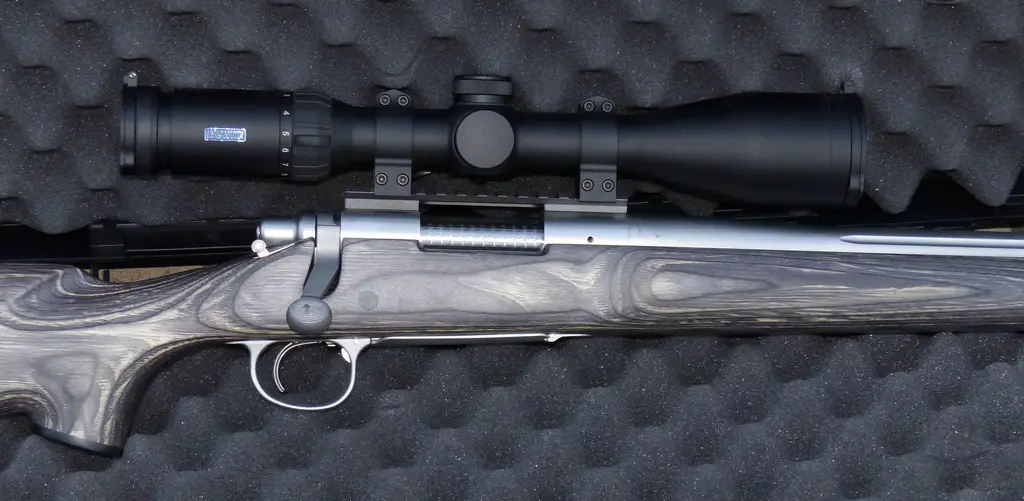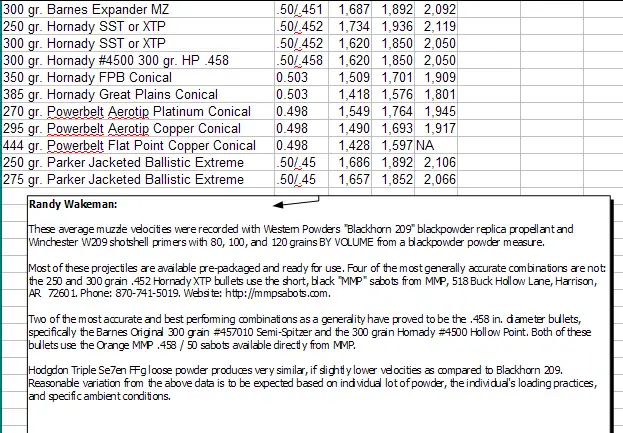


Remington 700 Ultimate Muzzleloader Review, Part Two

After removal of the rear peep sight, I installed a Warne M673M one piece rail. Then, I used Warne Maxima medium height quick release 30mm rings to mount a Hawke Endurance 30 2.5 – 10 x 50mm scope with the illuminated LR Dot ballistic reticle. That brings the weight of the entire rig up to 10-3/4 lbs. With the loads this rifle of capable of using, some will wish it was 20 pounds.
The maximum allowable published charge for Blackhorn 209 is 120 volumetric units (grains), or approximately 84 grains by weight. This basic data set hasn't changed since 2010. Of course, the notion of a propellant charge “maximum” by itself makes no sense, for projectile mass has everything to do with what is reasonable to do, or not, as well as tolerable recoil levels.
Popular .50 caliber muzzleloading projectiles, meaning .45 caliber bullets dressed by .50 caliber sabots, most often fall into the 250 – 300 grain weight range. It isn't heavy bullet weight by most standards, considering the classic .45-70 Government load was always a 405 grain bullet at 1305 fps, from a smaller .45 caliber bore.
For Blackhorn 209, 100 grains by volumetric black powder measure equates to about 70 grains of actual weight. In general, working up loads with Blackhorn is quite easy, for you just start at 90 grains of volume and stop when accuracy begins to erode, or your shoulder does. In times past, 110 grains by volume of Blackhorn 209 pushing a 300 grain projectile has been a good combination in terms of consistency, good velocity, range, and still be pleasant enough to practice with off of bag and cradle from the bench.

Above: Historical Blackhorn 209 Load Data
While I have no intention of breaking my shoulder, I did want to explore higher performance levels with the Remington Ultimate than stopping at Blackhorn published loads. So, I decided to do the initial range work with 100 grains of Blackhorn 209 by actual weight, meaning in the area of 143 grains by volume. Volumetric powder measures vary all over the place, as do personal methods for using them, so at least 100 grains by actual weight means the same thing to everyone. As this specific testing (late July) means higher than typical hunting temperatures, I wanted usable results as well rather than just making smoke.
As far as I'm concerned, a good hunting load cannot cause sabot stress and resultant poor accuracy at 95 degree temperatures out of a cold barrel, nor can it be prone to misfires or low velocities at below zero ambient temperatures, either. The fastest thing out of the muzzle, regardless of firearm, has never been the best load for me. It is that way with .22 rimfires, shotguns, centerfires, and muzzleloaders are no exception. By no means am I adverse to peppier loads, it is a matter of not being willing to accept poor accuracy, reliability, or unacceptable levels of recoil just for the sake of muzzle velocity worship.
It also doesn't make any sense at all to burn a lot of propellant just to get a poor ballistic efficient bullet out of the muzzle at high velocity, only to have dramatic velocity loss from a flying ashtray type of bullet by the time it arrives at the target, for terminal velocity is the only velocity that matters. I also don't want any more wind drift or drop than necessary. That means staying away from gaping hollow points and bore-sized bullets like Powerbelts, two really poor choices for long range muzzleloading applications.
So, for starters,
it is off to the range with a bag full of sabots and a wide variety of
projectiles, to see what kind of accuracy can be achieved out of this
rifle out of the box. Shooting results to follow in part three.
Copyright 2014 by Randy Wakeman. All Rights Reserved.

Custom Search


